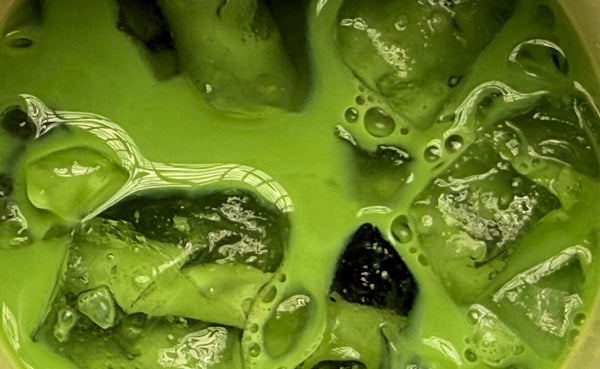Ovulation bleeding is a phenomenon that occurs during a woman's menstrual cycle. It is often referred to as mid-cycle bleeding and can be a cause for concern for some women.
Understanding Ovulation Bleeding
Definition of Ovulation Bleeding
Ovulation bleeding, also known as mid-cycle bleeding, vaginal bleeding, or spotting, is a phenomenon where some women may experience light spotting or bleeding during the time of ovulation. Ovulation occurs when an egg is released from the ovary around the middle of the menstrual cycle, usually around day 14 for women with a 28-day cycle. However, the timing may vary for each individual.
Ovulation bleeding is a fascinating aspect of a woman's reproductive cycle. This phenomenon occurs due to the sudden drop in estrogen levels just before ovulation, which can cause the uterine lining to shed slightly. This article explains what is ovulation bleeding, the causes and symptoms of ovulation bleeding, and how to manage it.
What does Ovulation Bleeding Look Like?
Ovulation bleeding is often lighter and shorter in duration compared to regular menstrual bleeding. It may appear as light pink or brown spotting and can range from a few drops to a light flow. The consistency of the blood may be thinner than during menstruation.
Many women may also notice a difference in cervical mucus during ovulation, which can appear clearer, thinner, and more slippery - resembling the consistency of egg whites. This change in cervical mucus is a natural part of the ovulation process and can help facilitate the journey of sperm to meet the egg for fertilization.
What is the Normal Amount of Ovulation Bleeding?
It is important to understand that the amount of ovulation bleeding can vary among women. Some may experience just a few drops of spotting, while others may have a slightly heavier flow. As a general guideline, if the bleeding is minimal and does not require a tampon or pad, it is considered normal.
Tracking ovulation bleeding can also be a useful tool for women trying to conceive. By monitoring these subtle changes in their cycle, women can pinpoint their most fertile days and increase their chances of becoming pregnant.
Causes of Ovulation Bleeding
Potential Causes of Ovulation Bleeding
One of the main causes of ovulation bleeding is the surge in estrogen levels that occurs during ovulation. This surge can cause the uterine lining to become more sensitive and may lead to light spotting or bleeding.
Ovulation bleeding can sometimes be triggered by the release of an egg from the ovary, which can cause a small amount of bleeding as the egg is expelled. This process, known as ovulation, is a crucial part of the menstrual cycle and typically occurs around the middle of a woman's cycle.
Other factors, such as hormonal imbalances or the presence of ovarian cysts, can also contribute to ovulation bleeding.
Symptoms of Ovulation Bleeding
Aside from the presence of light bleeding or spotting during ovulation, women may also experience other symptoms of ovulation. These may include:
- Mild pelvic pain or cramping, known as mittelschmerz
- Breast tenderness
- Increased cervical mucus
- Slight increase in basal body temperature
- Heightened sense of smell
- Abdominal bloating
It is worth noting that not all women will experience the common symptoms of ovulation bleeding, and the absence of symptoms does not necessarily mean that ovulation is not occurring.
In addition to the physical symptoms, some women may also notice changes in their mood or libido during ovulation. This is thought to be due to fluctuations in hormone levels, particularly estrogen and progesterone, which can impact a woman's emotional state and sexual desire. These changes are a normal part of the menstrual cycle and usually subside once ovulation is complete.
Ovulation Bleeding vs. Period Bleeding
Key Differences Between Ovulation Bleeding and Period Bleeding
While both involve some form of uterine bleeding, there is a key difference between ovulation bleeding and period bleeding.
Timing: Ovulation bleeding occurs around the middle of the menstrual cycle and is typically lighter and shorter in duration than period bleeding. Period bleeding, on the other hand, occurs as part of the menstrual cycle and usually lasts for several days with a heavier flow.
Appearance: Ovulation bleeding may have a different appearance, often lighter in color and consistency, compared to period bleeding.
Intensity: Ovulation bleeding is not experienced by all individuals and may vary in intensity from person to person. Some may only notice a slight spotting, while others may have more noticeable bleeding.
This variation is considered normal and is influenced by factors such as hormonal fluctuations and individual differences in the menstrual cycle.
Similarities Between Ovulation and Period Bleeding
Despite their differences, ovulation bleeding and period bleeding are both normal bodily functions that occur within the menstrual cycle.
Both involve the shedding of the uterine lining, although the purpose and timing differ. Ovulation bleeding marks the release of an egg from the ovary, while period bleeding indicates the shedding of the uterine lining in preparation for a new menstrual cycle.
It's worth mentioning that tracking ovulation and period bleeding can be helpful for individuals trying to conceive or understand their menstrual cycle better. Individuals can monitor patterns in their bleeding with a menstrual diary, which may provide valuable insights into their reproductive health and fertility.
Spotting as a Sign of Pregnancy
Understanding Spotting in Early Pregnancy
Spotting can be a common occurrence in early pregnancy, and it is often mistaken for ovulation bleeding. Spotting in early pregnancy is generally lighter and shorter in duration compared to ovulation bleeding. It may occur around the time when a woman would normally expect her period, which can lead to confusion.
Implantation bleeding is also a similar phenomenon, where a fertilized egg gets implanted in the uterine wall. This implantation happens at the end of the cycle, just before the period starts. Hence, some women may notice light spotting as an early sign of pregnancy.
If you suspect you may be pregnant and experience spotting, it is recommended to take a pregnancy test and consult with your healthcare provider for further guidance.
Difference Between Ovulation Bleeding and Pregnancy Spotting
Distinguishing between ovulation bleeding and pregnancy spotting can be challenging due to their similarity in appearance. However, a key factor in differentiating the two is timing.
|
Aspect |
Ovulation Bleeding |
Pregnancy Spotting |
|
Timing |
Occurs around the middle of the menstrual cycle |
May coincide with the expected time of the period |
|
Appearance |
Light spotting or pinkish discharge |
Light spotting or pinkish discharge |
|
Symptoms |
None typically |
Early pregnancy symptoms like breast tenderness, nausea, frequent urination |
|
Causes |
Ovulation-related hormonal changes |
Implantation bleeding, cervical changes, ectopic pregnancy, threatened miscarriage, infection, cervical polyp |
|
Duration |
Typically 1-2 days |
Can vary, often resolves on its own if harmless |
|
When to consult a doctor |
Usually not necessary unless unusual or heavy |
If heavy bleeding, severe abdominal pain, or other concerning symptoms occur |
Spotting during early pregnancy can be a confusing and sometimes worrisome experience. While it is often mistaken for ovulation bleeding, there are key differences in timing and characteristics.
Conclusion
Ovulation bleeding is not common, but it is also not a cause for concern. It is important to pay attention to your body and consult with your healthcare provider if you have any concerns or suspect you may be pregnant. They can provide you with the necessary guidance and support throughout your pregnancy journey.



























 DOWNLOAD NOW
DOWNLOAD NOW
